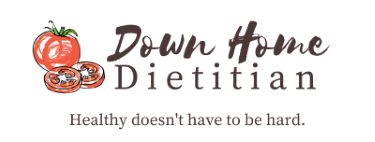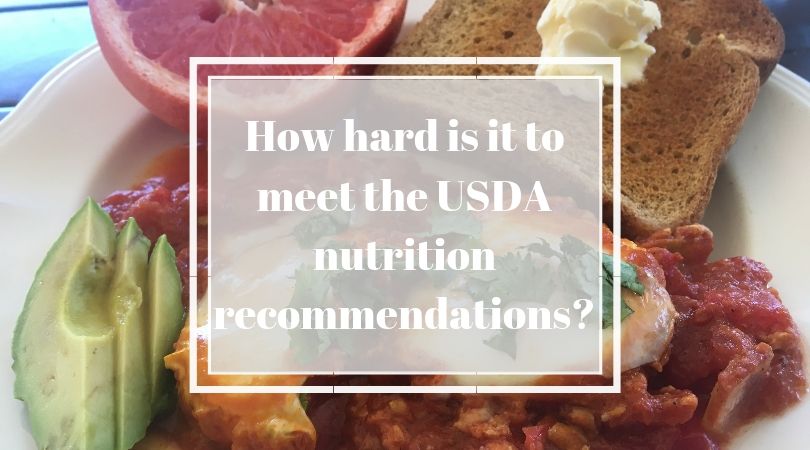Today marks my last official day following the MyPlate diet. Starting in one week, I will begin on the next. I thought I’d sum things up a bit with a bunch of things I have learned, and that have already started to change the way I view food and work with my patients:
- My body regulates its calorie intake pretty well. I quickly realized that even if I wasn’t tracking my food throughout the day, I would end up eating 1800-2000 calories without feeling deprived or overfull. Bodies are cool like that.
- 1 cup is not as much as I thought.
 Exhibit A: 1 cup of orange juice in a standard glass. Pouring appropriate servings took some practice.
Exhibit A: 1 cup of orange juice in a standard glass. Pouring appropriate servings took some practice. - 2 tablespoons is a lot more than I thought.
 As the standard serving size for many condiments, 2 tablespoons of peanut butter, mayonnaise, or any kind of salad dressing was waaaaaaaay more than I ever thought. I had always assumed I was eating more than that by default, but when I measured out 2 tablespoons of almond butter to eat with my apple I couldn’t even finish it!
As the standard serving size for many condiments, 2 tablespoons of peanut butter, mayonnaise, or any kind of salad dressing was waaaaaaaay more than I ever thought. I had always assumed I was eating more than that by default, but when I measured out 2 tablespoons of almond butter to eat with my apple I couldn’t even finish it!
- “Eat breakfast like a king, lunch like a prince, and dinner like a pauper”
 This nifty little saying is something I had heard over time to flip the traditional “American” way of eating on its head. It makes sense because when you eat breakfast, you’re fueling your body for the whole day, so you need to eat more and eat well. At night, you’re only fueling your body for another hour or two. It worked beautifully for me when I was trying to get all of my food groups in. In the morning I was motivated to eat well and get all of my groups in and by the evening I was tired after work and more likely to go for something easy. It worked with my plan, rather than a common diet pattern of eating basically nothing for breakfast and lunch, then bingeing at dinner when you’re tired and starving. I heard a dietitian at a conference once refer to that as the “weight gain diet.”
This nifty little saying is something I had heard over time to flip the traditional “American” way of eating on its head. It makes sense because when you eat breakfast, you’re fueling your body for the whole day, so you need to eat more and eat well. At night, you’re only fueling your body for another hour or two. It worked beautifully for me when I was trying to get all of my food groups in. In the morning I was motivated to eat well and get all of my groups in and by the evening I was tired after work and more likely to go for something easy. It worked with my plan, rather than a common diet pattern of eating basically nothing for breakfast and lunch, then bingeing at dinner when you’re tired and starving. I heard a dietitian at a conference once refer to that as the “weight gain diet.” - Meal plans can be helpful. They are also really annoying. It was a love-hate relationship for me. It was nice to know I had everything already bought and decided for what I was going to eat. However, making the grocery list, having no flexibility, and feeling like I “cheated” when I didn’t eat exactly what was on it were all big cons for me. Check out this article for more thoughts on meal plans.
- Vegetables are really low in calories. Like, REALLY low. I knew this already in my brain, but putting 1 cup of spinach, 1/4 cup of mushrooms, half a tomato, and half a cucumber into your tracker and getting a grand total of 37 calories kind of drives that one home.
- Tracking everything you eat is exhausting. It was kind of fun in its way…for about a week. After that it became very tiresome, especially if I got behind and had to catch up. From now on, I think I’ll recommend that clients track for about two weeks, and then maybe one day each week just to keep in check. After a week or two you get a pretty good idea of how to do it in your head, anyway.
- Tracking websites and apps help with this a lot.
 Personally I like My Fitness Pal, but there are negatives to it also. One thing I really love is that you can enter in homemade recipes, calculate the nutrition facts, and save them to go back and use later.
Personally I like My Fitness Pal, but there are negatives to it also. One thing I really love is that you can enter in homemade recipes, calculate the nutrition facts, and save them to go back and use later. - Eating three servings of dairy a day is really repetitive.
 Yogurt, milk, cheese, yogurt, milk, cheese, yogurt, milk, cheese.
Yogurt, milk, cheese, yogurt, milk, cheese, yogurt, milk, cheese. - Vegetables are not really as difficult to get in as I expected. They can go in most anything. My friend Abbie taught me this the weekend I stayed with her. Abbie puts veggies in everything – scrambles for breakfast, soups for lunch, and side dishes for dinner. Just chop, chop, chop and sautee, bake, boil, or steam. They add tons of flavor variety too.
- It is extremely difficult to eat less than 2300 milligrams of sodium per day. Except for when I was traveling, I cooked most everything at home from scratch. I ate a ton of fresh produce. I rinsed the canned beans. I stayed away from the packaged, the processed, the sodium-laden. It was a terrible struggle. I’ll have a lot more empathy for my heart failure patients from here on out.
- It is even more difficult to eat more than 35 grams of fiber per day. TONS of veggies, beans, and whole grains was not enough to get me there most of the time. I was about to start gnawing on cardboard in the evenings just to reach my daily goal.
- Eating MyPlate at restaurants is really not very tough (with the exception of limiting sodium).
 Many places have fruit side dish options and milk as a beverage choice. The struggle here? Whole grains.
Many places have fruit side dish options and milk as a beverage choice. The struggle here? Whole grains. - Telling people you’re on a diet can be awkward. Most people were really supportive of me and the reasons I’m doing it, but that wasn’t always the case.
- Some kinds of exercise can make really big dents in your calorie intake.
 Hiking, snowboarding, dancing, biking up hills, and plyometrics left my net calories for the day sometimes as low as 1400! I was shocked at how quickly these fun activities added up to big time calorie gaps.
Hiking, snowboarding, dancing, biking up hills, and plyometrics left my net calories for the day sometimes as low as 1400! I was shocked at how quickly these fun activities added up to big time calorie gaps. - Other kinds of exercise make reaaaaaally teeny dents in your calorie intake.
 Cycling through town or strolling with the fiance was not going to fit the bill if I was trying to even out an indulgent day.
Cycling through town or strolling with the fiance was not going to fit the bill if I was trying to even out an indulgent day. - On a related note, it’s okay to have indulgent days. One weekend day out with Abbie I ate chicken wings at happy hour. You may have read about my Superbowl feast. In the end, it all averaged out. Some days were a little low, some days were a little high. I never really felt deprived at all during the entire three weeks.
- I don’t need to eat as much ice cream as I usually dish out. I still maintain that the half-cup serving size on the label is insulting and offensive, but two small scoops was enough for me. I rarely eat ice cream because I’m actually hungry…I just want to taste it.
- Starting small and working up with salt can go a long way. Make your meal and taste it. Add a little bit of salt only if you feel like you need to. I found that most of the time, I didn’t need to add any salt and when I did it ended up being only a pinch in the entire recipe.
- I’m really enjoying being creative with food. God gave us the amazing gift of thousands of different flavors in this world…and there are so many combinations to explore! I’m so excited about trying new foods, new recipes, and new ideas. Send me your favorites! I’d love to try them!
- I think it’s going to be hard for me to not pay attention to what I’m eating once the diet is over. I’ve heard a lot of people talk about being obsessed with their food once they have been on diets, and I can totally relate now. It’s a different animal to be completely aware of everything that goes down the gullet – keeping a mental tally of food groups, calories, and nutrients. Honestly, I’m really curious to see how it ends up going on this week off from dieting.
Thanks for your support and following along with me!










 This yummy breakfast started me off with 2 oz of whole grains, 1 1/2 cups dairy, 1 cup fruit, and 1/2 cup vegetables – all of the groups I knew would be tough to get at the party. Though I used some Greek yogurt and dairy to get protein in this breakfast, I avoided meat and eggs because I knew there would be loads of protein at the party later.
This yummy breakfast started me off with 2 oz of whole grains, 1 1/2 cups dairy, 1 cup fruit, and 1/2 cup vegetables – all of the groups I knew would be tough to get at the party. Though I used some Greek yogurt and dairy to get protein in this breakfast, I avoided meat and eggs because I knew there would be loads of protein at the party later.





